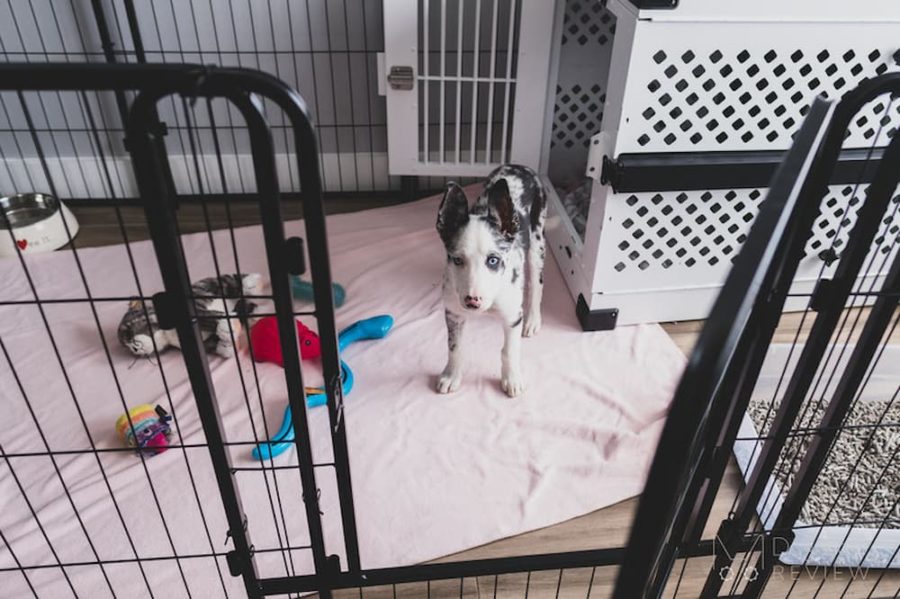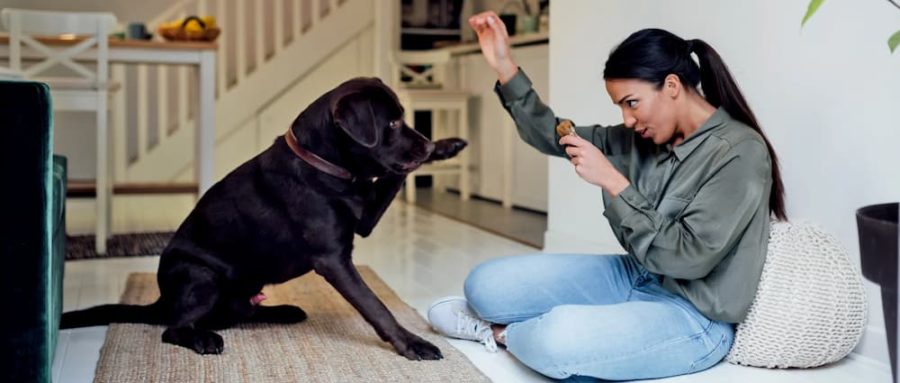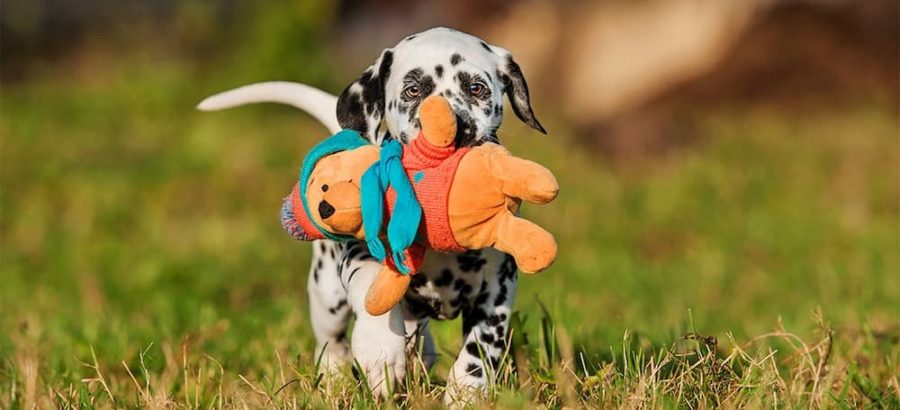Ensuring puppies receive regular exercise and play is essential for their overall care and growth. Engaging your furry friend in consistent physical and mental activities has various benefits such as energy release, bone health, physical development, and mental stimulation. It also offers the opportunity for your pooch to socialize with other puppies and learn how to behave appropriately.
That being said, you need to consider several approaches for providing your pup with proper play and physical activities while avoiding overexertion. To help you with that, we have come up with a list of our top suggestions to keep your puppy active, happy, and on the path to becoming a healthy adult dog.
Use a Playpen
Puppy playpens are specifically designed enclosures or areas where puppies can safely play, exercise, and rest. Investing in a lightweight and sturdy puppy pen is a great choice as it can be quite useful for both the puppies and their owners.
The main advantage of a playpen is that it can provide a controlled and safe environment for exercise and play for young dogs. While playpens themselves may not offer extensive space for high-energy physical activities like running, they serve as a secure area where puppies can move around, play with toys, and explore without the risk of running off or getting into dangerous situations.

Playpens give puppies more space to move and play compared to a crate. This allows them to stretch, play with toys, and engage in light physical activities. Inside the playpen, you can place interactive toys like puzzle toys and chew toys, which stimulate mental activity and keep your puppy engaged. An additional advantage is the fact that they offer a controlled setting for supervised play, allowing you to interact with your puppy, engage in training sessions, and play games together.
Moreover, some playpens are portable and suitable for outdoor use, providing your puppy with fresh air and outdoor experiences while ensuring their safety. Also, an outdoor puppy pen can be used for travel since it comes in a lightweight design that’s easy to carry.
Another benefit is that for new puppies adjusting to a new home, a playpen can serve as a transitional space between the breeder’s environment and their new living space, providing a sense of security during the adjustment period.
However, it’s essential to remember that playpens should not be the only form of exercise and play for your pet. They can be used alongside other activities and should not replace opportunities for exploration and interaction outside of the confined space.
Play Fetch
Playing fetch is an excellent form of exercise and play for puppies. It provides physical activity for the pups as they run, jump, and retrieve the toy, while also offering mental stimulation as they engage in problem-solving during the game.
Also, fetch strengthens the bond between you and your puppy, reinforcing trust and obedience. It’s a fun and enjoyable activity that satisfies their natural instincts for catching and retrieving and can be adapted for both indoor and outdoor play.
When playing fetch with your puppy, ensure you use a soft and safe toy that is appropriate for their size and age. Start in a secure, enclosed area, and gradually increase the distance as your puppy becomes more comfortable with the game. To ensure safety and avoid overexertion, keep the sessions short and positive, especially with younger puppies.
Incorporate Short Training Sessions
Incorporating short training sessions is another great way to provide both exercise and play for your furry friend. Training engages their mind, challenges them, and keeps them mentally stimulated. It also enhances their problem-solving abilities and strengthens the bond between you and your furry companion.

Training exercises can involve teaching basic commands, practising tricks, or even participating in fun agility exercises. These sessions not only promote good behaviour but also fulfil their need for mental activity. By making training sessions enjoyable and rewarding, you create a positive and enriching experience for your puppy, contributing to their overall well-being and development.
Go for Walks
Taking your dog for outdoor walks offers numerous benefits for both you and your furry companion. These walks provide essential physical exercise for your dog, keeping them fit and maintaining a healthy weight. As you stroll together, your dog’s senses are engaged, providing mental stimulation, and preventing boredom.
The time spent outdoors also creates opportunities for play, allowing you to interact and build a connection with your beloved pet. Moreover, outdoor walks expose your dog to different people, animals, and environments, promoting socialization and reducing fear or aggression. As you establish a routine of regular walks, you build trust and enhance communication, strengthening the bond between you and your puppy.
How Much Play and Exercise Does a Puppy Need?
The amount of needed play and exercise depends on factors like age, breed, size, and individual energy levels. Generally, young puppies need shorter play sessions throughout the day, gradually increasing as they grow older. Around five minutes of exercise per month of age, up to twice a day, can be a general guideline.
However, it’s crucial to avoid overexertion and remember to give your puppy regular breaks. Always consult a veterinarian to tailor the play and exercise routine to your puppy’s specific needs for a happy and healthy companion.
Does Play Count as Exercise for Puppies?
Play is an essential form of physical and mental activity for young canines and does count as exercise. It helps them develop coordination, strengthen muscles, and improve overall fitness. Engaging in play allows puppies to burn off excess energy, preventing behavioural issues that may arise from boredom or restlessness.

Additionally, playtime provides mental stimulation, promoting cognitive development and problem-solving skills. As a puppy owner, you can actively participate in their play sessions, offering interactive games and activities to keep them engaged and happy.
Conclusion
In conclusion, prioritizing exercise and play for your canine companion is crucial as it affects their overall development. With that in mind, you should consider our suggestions including trying out playpens, interactive toys, playing fetch and outdoor walks to ensure your puppy is sufficiently stimulated and active.
Don’t forget to balance activity with adequate rest to avoid overexercising your pup and allow them to enjoy the activities. By providing a healthy mix of play, exercise, and in-between breaks, you can foster a safe environment for your puppy’s growth and well-being.



